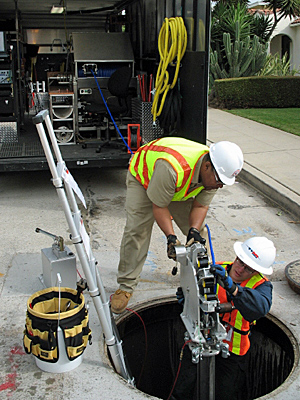How to Repair Municipal Water Leaks

Are you worried about hundreds of gallons of water leaking out of pipelines that run several feet below your house, area and the city?
If yes, you should be aware that departments dedicated to providing you with clean drinking water have to face “water loss” every year, losing thousands of dollars that can be used for your welfare. Leaking pipelines are a headache as they make a mess and increases your water bill.
Water loss through leaked pipelines and tanks not only causes you trouble at home or your locality, but it also takes a lot of money in the form of regular repairs. In order to stay on the safe side, you should know how to detect water leakage in and around your house and do something about it.
Instructions
-
1
Turn off all the water-using appliances and pipelines
First, turn off all the water appliances like water coolers, showers, washing machines, sprinkler irrigation system and sinks. Check out the water meter. There is a leak indicator in the water meter, which will indicate if the water is leaking out.
The leak indicator is a triangle-shaped silver (or sometimes red) disc, which keeps spinning if there is a leak in your pipelines inside your house. Turn off the shut-off valve, which is usually located near your water meter. If the leak indicator still spins, slow or fast, after having turned off all the water-using appliances, you should know that you have detected a leak. -
2
Use hose clamp
Once the leak has been found, you can now do some repair work. Wrap the damaged place/spot with a rubber pad and an electrical tape. Electrical tape works best in small leaks. For municipal leaks that are not so big and can be repaired without resorting to a professional help, you can use a hose clamp.
Hose clamp is like a pipe clamp, but is designed to fix smaller leaks. Use a rubber pad on the damaged spot and then screw the hose clamp securely. -
3
Use pipe clamp
Municipal leaks are usually big and they often require some extra tools and remedies. A pipe clamp will come in handy in this regard. Buy a pipe clamp according to the size of the affected pipeline. Make sure the area where leakage has occurred is clean and free of dust and sand.
Wrap the leak with a rubber pad (which can be easily found at stores dealing in plumbing tools), and screw the pipe clamp tightly and securely. This method is best in large water leaks.







